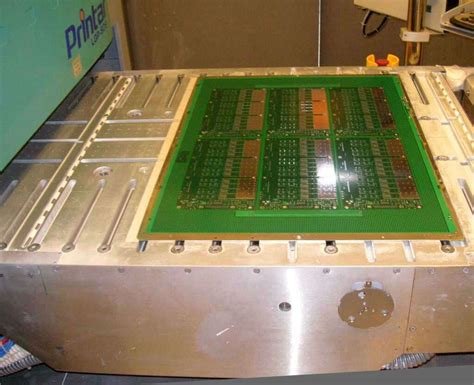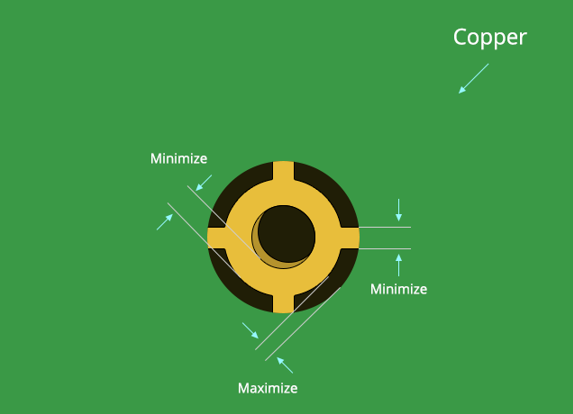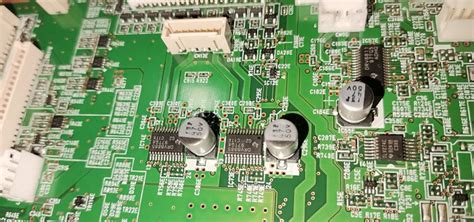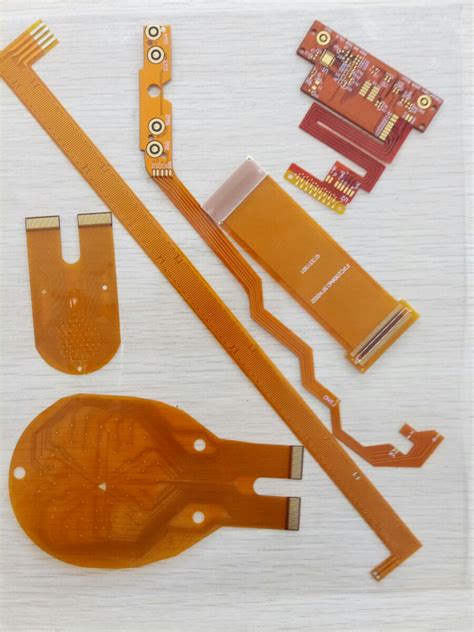Revolutionizing Technology: The Art of Circuit Card Assembly
Key Takeaways
In the realm of modern technology, pcb assembly is not just a technical process; it is an intricate art that requires a harmonious blend of precision and innovation. The world of pcba is a canvas where skilled engineers and designers come together to create essential electronic components that power various devices. Through a careful combination of advanced techniques and rigorous quality standards, the assembly process plays a crucial role in ensuring that every circuit card meets the required specifications. Historically, the evolution of these processes has led to greater efficiency, allowing for the production of more complex and compact designs. Emphasizing accuracy at every stage, from design to production, is pivotal in achieving not only functionality but also reliability in end products. As you delve deeper into circuit card assembly, you’ll discover that each element, from material selection to assembly techniques, reflects the dedication to achieving excellence in technology. Embracing emerging innovations continues to drive improvement and open new avenues for advancement, thereby revolutionizing how circuit cards are conceptualized and manufactured for future applications.
Introduction to Circuit Card Assembly: A Foundation of Modern Technology
The world of PCB assembly is a cornerstone of modern technology, enabling the creation of devices that permeate our daily lives. At its essence, circuit card assembly (often referred to as PCBA) involves the precise integration of various components onto a printed circuit board (PCB), forming the backbone of electronic functionality. This process demands not only technical expertise but also a refined sense of craftsmanship. As technology advances, the techniques used in circuit card assembly evolve to incorporate new materials and processes that enhance performance and efficiency.
Key Components of PCBA
In understanding the art behind circuit card assembly, it’s essential to recognize the key components involved:
| Component Type | Functionality |
|---|---|
| Resistors | Control electrical current. |
| Capacitors | Store and release energy as needed. |
| Microcontrollers | Serve as the “brain” for processing information. |
| Connectors | Facilitate connections between different components. |
The intricate relationship between these elements showcases how each part contributes to creating a reliable circuit board.
“Precision in every aspect leads to quality in results.”
Such insights highlight why meticulous attention is critical throughout the assembly process, ensuring that innovation is built on a solid foundation. As we delve deeper into this transformative world, it becomes clear that understanding how we create these essential components shapes not only our technology today but also guides future innovations in electronics.
The Evolution of Circuit Card Assembly Techniques
The journey of pcb assembly has been marked by significant advancements that reflect the rapid pace of technological innovation. Over the decades, the processes involved in pcba have evolved from manual configurations to highly sophisticated automated solutions. Early techniques relied heavily on hand-soldering and basic assembly practices, often leading to inconsistencies and errors. However, with the advent of new materials and precision tools, manufacturers now employ advanced methods such as surface mount technology (SMT) and through-hole technology that enhance both efficiency and accuracy. These innovative approaches not only reduce manufacturing times but also allow for greater design flexibility, enabling the integration of more complex circuit designs within increasingly compact spaces. Moreover, advancements in software have played a pivotal role in optimizing circuit card assembly, allowing for more precise simulations and design verifications before physical production takes place. As a result, modern circuit cards are not just functional; they are masterpieces of engineering that contribute significantly to the unfolding narrative of modern technology.
Precision in Design: The Artistry Behind Circuit Card Creation
The creation of circuit cards, specifically through the process known as pcb assembly or pcba, is a harmonious blend of art and science, where meticulous design and engineering precision meet innovative technology. In this intricate landscape, designers must consider a myriad of factors, from the layout of circuit paths to the selection of components that will ultimately influence performance and reliability. Each circuit card must be crafted with an acute awareness of electrical characteristics and thermal management to ensure optimal function. The artistry lies not only in achieving technical specifications but also in aesthetic considerations; expertly designed circuit layouts can exhibit a form of elegance that reflects the designer’s vision. The integration of tools such as computer-aided design (CAD) software allows for detailed visualizations which enhance precision, enabling engineers to create complex patterns with accuracy. This meticulous attention to detail in pcb assembly is crucial, as any oversight could compromise the entire system’s performance. Thus, each step in the creation process—from selecting high-quality materials to conducting thorough testing—echoes this deep-seated commitment to excellence and innovation that drives modern technology forward.

Key Components: Understanding the Heart of Circuit Cards
In the fascinating domain of pcb assembly, understanding the key components of circuit cards is essential for grasping how these intricate systems function. At the core, a printed circuit board (PCB) serves as a foundation, providing the necessary pathways for electrical signals. This assembly integrates various essential elements, such as resistors, capacitors, and integrated circuits, which all work harmoniously to execute a multitude of tasks. Each component plays a significant role; for instance, resistors manage electrical currents, while capacitors store and release energy as needed. Moreover, advanced connectivity features like vias are crucial in ensuring signals traverse between different layers of the PCB. The art of pcba is not solely technical; it also involves meticulous design and engineering decisions that enhance efficiency and reliability. Moreover, innovations in materials and techniques contribute to the increasing miniaturization of components, allowing for more complex designs within a limited space. The result? An advanced circuit card that not only meets modern technological demands but also supports progressive innovations in various sectors—from consumer electronics to biomedical applications. Understanding these vital components sheds light on the innovation that drives modern technology forward, showcasing how each part contributes to performance and efficiency in every device we rely on daily.

Innovations Shaping the Future of Circuit Card Assembly
As the demand for more advanced technology continues to rise, innovation in PCB assembly and PCBA processes plays a crucial role in shaping the future of circuit card assembly. Emerging technologies such as additive manufacturing and flexible circuit designs are revolutionizing how circuit cards are produced, allowing for greater design flexibility and enhanced performance. By integrating smart materials and increased automation, manufacturers are enabling a new era of high-density interconnects that can accommodate the complex needs of modern devices. Furthermore, advancements in surface mount technology have significantly improved the efficiency of circuit card manufacturing, resulting in smaller form factors that do not compromise on quality. Innovations like machine learning and data analytics are also being employed to enhance quality control processes, ensuring that defects are identified and addressed at an early stage. This confluence of technology not only optimizes production workflows but also contributes to sustainable practices within the industry. As we move forward, these technological advancements will continue to drive innovation in circuit card assembly, ensuring that essential components remain at the forefront of technological progress.
Quality Control in Circuit Card Manufacturing: Ensuring Excellence
In the realm of pcb assembly and pcba, quality control stands as a pivotal element in the manufacturing process, ensuring that every circuit card meets the exacting standards required for modern electronic devices. This intricate process begins with rigorous inspection protocols that assess each component’s compliance with predefined specifications. Additionally, advanced testing methods such as Automated Optical Inspection (AOI) and functional testing play a critical role in identifying defects early, significantly reducing the risks associated with faulty assemblies. The implementation of these techniques fosters a culture of precision, which is essential when considering the complexity of modern electronics.
Moreover, maintaining stringent quality control not only enhances product reliability but also sustains customer trust. As technology continually evolves, so does the technology behind pcb assembly processes. Thus, training personnel in the latest advancements is essential to uphold quality standards. Continuous improvement initiatives further drive excellence by integrating feedback loops for process optimization. Hence, within circuit card manufacturing, an unwavering commitment to quality assurance practices is indispensable for delivering top-tier products that underpin contemporary technological innovations.
The Role of Automation and Robotics in Circuit Card Assembly
In the world of pcb assembly and PCBA, the integration of automation and robotics has significantly transformed the landscape of circuit card assembly. These advanced technologies not only enhance efficiency but also improve the precision of component placement, which is critical in the production of complex circuit boards. With robotics taking on repetitive tasks, manufacturers can ensure higher consistency in quality and minimize human error during the circuit card assembly process. This not only accelerates production times but also allows for greater scalability in meeting diverse market demands. Furthermore, robots equipped with sophisticated vision systems can detect discrepancies and ensure that each assembly meets rigorous quality standards, making them invaluable in maintaining high fidelity throughout production runs. As automation technology continues to evolve, we can expect even more groundbreaking innovations that will further streamline pcb assembly processes, thereby solidifying its role as a cornerstone of modern technology development. Ultimately, the synergy between automation and traditional circuit card assembly techniques represents a significant leap forward in how electronic components are manufactured and assembled efficiently and reliably.
Future Trends: What’s Next for Circuit Card Technology
As technology continues to advance, the future of circuit card assembly (or pcb assembly) is brimming with exciting possibilities. One significant trend is the increasing integration of automation and robotics into the pcba process. By leveraging advanced robotic systems, manufacturers are able to enhance precision and efficiency in assembling intricate circuit card designs. This shift not only minimizes human error but also accelerates production timelines, allowing companies to meet the ever-growing demand for more sophisticated electronics.
Additionally, the emergence of flexible printed circuits represents another area of transformation within circuit card technology. These innovative designs enable enhanced functionality in compact spaces, paving the way for thinner, lighter devices without compromising performance. As consumer preferences shift towards portable technology, the adaptability of pcb assembly will become more critical.
Moreover, emerging materials such as organic substrates and nano-coatings are poised to disrupt traditional methods. These materials offer better performance characteristics and environmental resilience, aligning with global sustainability efforts. The fusion of these cutting-edge materials with state-of-the-art manufacturing processes will further elevate the quality and reliability of circuit cards.
With continuous research and development in this domain, we can anticipate even more revolutionary innovations that will redefine how we think about pcb assembly, contributing to intelligent systems and interconnected devices that will shape our future technology landscape. Ultimately, these trends signal a dynamic evolution within circuit card technology, fostering a thrilling environment for engineers and manufacturers alike as they adapt to an ever-shifting technological paradigm.
Conclusion
In summary, circuit card assembly (often referred to as pcb assembly or pcba) plays a pivotal role in advancing modern technology. The emerging techniques and innovations in pcb assembly have not only enhanced manufacturing processes but have also contributed to the overall functionality and reliability of electronic devices. As we have explored throughout this article, the artistry involved in designing each circuit card is as crucial as the technological advancements that facilitate higher efficiency and precision. With the integration of automation and robotics, the standards for quality control have significantly improved, ensuring that every component meets rigorous specifications before it even reaches consumers. The future of circuit card assembly holds infinite possibilities, driven by a relentless pursuit of excellence and a commitment to pushing technological boundaries. As we embrace these advancements, it is clear that the craftsmanship involved in creating these essential components will continue to evolve, reflecting the needs and demands of an ever-changing world.

FAQs
What is PCB assembly?
PCB assembly, often referred to as pcba, is the process of connecting various electronic components to a printed circuit board (PCB). This crucial step transforms a bare board into a fully functional electronic device.
Why is precision important in PCB assembly?
Precision is vital in pcb assembly as even the smallest error can lead to functional failures or reduced performance of the assembled circuit. Proper alignment and careful soldering ensure that all components work seamlessly together.
What types of components are used in PCB assembly?
Common components include resistors, capacitors, integrated circuits, and connectors. Understanding these key components helps in grasping the heart of circuit card functionality.
How has technology evolved in circuit card assembly?
Advancements such as automated soldering machines and innovative materials have significantly improved the efficiency and reliability of pcba. These innovations have redefined manufacturing capabilities, allowing for complex designs that were once thought impractical.
What role does quality control play in PCB assembly?
Quality control ensures that each stage of pcb assembly meets industry standards, which is crucial for creating reliable electronics. Rigorous testing procedures help identify defects early in the production process.
Interested in learning more about PCB Assembly?
For more detailed insights and resources on pcb assembly, please click here.






